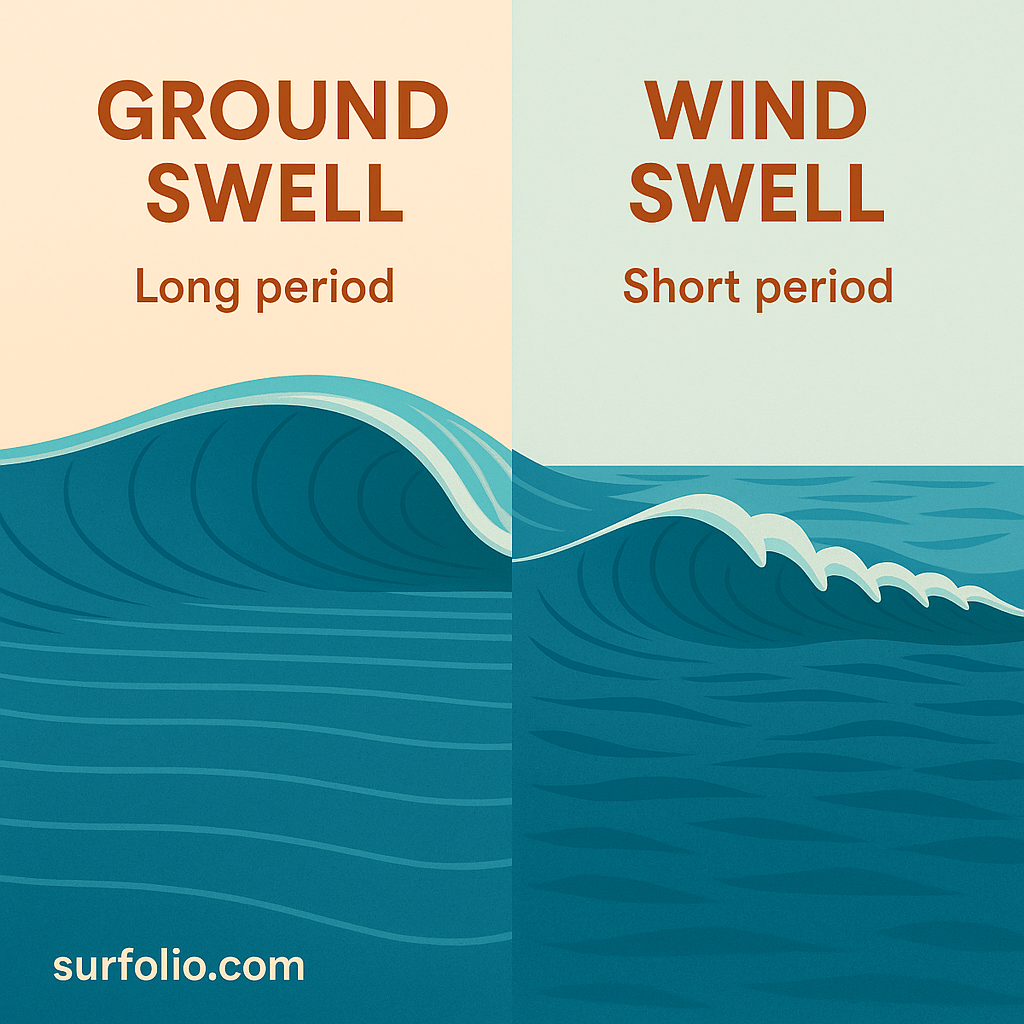
Understanding Swells in Surfing
Every wave that reaches the beach starts as energy traveling through the ocean. That energy — called a swell — forms when wind interacts with the sea surface, generating waves that can travel thousands of miles.
Not all swells are created equal. The two main types surfers talk about are ground swells and wind swells, and knowing the difference helps you predict which days will bring clean, powerful surf — and which will be choppy or short-lived.
What Is a Ground Swell?
Ground swells are generated by strong, long-lasting winds far out at sea — often from large storms or low-pressure systems.
Because the wind blows over vast distances (called the fetch) and for extended periods, the energy travels deep into the ocean, creating long-period waves with smoother, more organized lines.
Characteristics of ground swells:
- Long wave periods (typically 10–20+ seconds)
- Travel long distances across the ocean
- Create powerful, well-formed waves
- Consistent and easier to read for surfers
Ground swells are what most surfers dream about. They bring clean, powerful surf with well-defined sets and long rides.
What Is a Wind Swell?
Wind swells are created by local winds blowing close to the coastline. These winds have a short fetch and duration, so the waves they produce are smaller, less organized, and have shorter wave periods.
Characteristics of wind swells:
- Short wave periods (typically 4–9 seconds)
- Form quickly and fade fast
- Choppier and less predictable
- Can make the surface bumpy and messy
While wind swells can still be fun, they’re usually less ideal for clean surf sessions. However, they can bring quick bursts of energy when conditions align.
The Science Behind Wave Periods
The wave period — the time between one wave crest and the next — is the best indicator of swell power.
- Long-period waves (ground swells) carry more energy and hold shape as they travel.
- Short-period waves (wind swells) lose energy quickly and feel disorganized.
As a general rule:
- A 5-second period feels like wind chop.
- A 12-second period creates powerful, surfable waves.
- A 16-second period means you’re in for something special.
How Swell Type Affects Surfing
The difference between ground and wind swells is more than science — it determines your session’s vibe.
Ground swells:
- Produce clean, rolling sets
- Travel far and wrap into sheltered bays
- Generate hollow barrels and longer rides
Wind swells:
- Often mean short, peaky waves
- Can create local fun sessions for shortboards or beginners
- Tend to die off quickly once the wind stops
For the best surf, look for long-period ground swells combined with light offshore winds — that’s the recipe for glassy, world-class conditions.
Reading Forecasts Like a Pro
When checking surf forecasts, pay attention to:
- Swell period: Longer = stronger.
- Swell direction: Matches the orientation of your local break.
- Wind direction: Offshore cleans up the waves, onshore roughs them up.
Websites like Surfline, Windy, and Magicseaweed display this data in graphs — once you know what to look for, you can time your sessions perfectly.
Final Thoughts
Understanding the difference between ground swells and wind swells transforms how you read the ocean.
Ground swells bring the classic surf days every rider dreams of — long lines, open faces, and rhythmic sets.
Wind swells bring quick fun when the breeze picks up, offering practice and variety.
Both have their place in a surfer’s world. The key is knowing which one’s rolling in — and when to grab your board.
